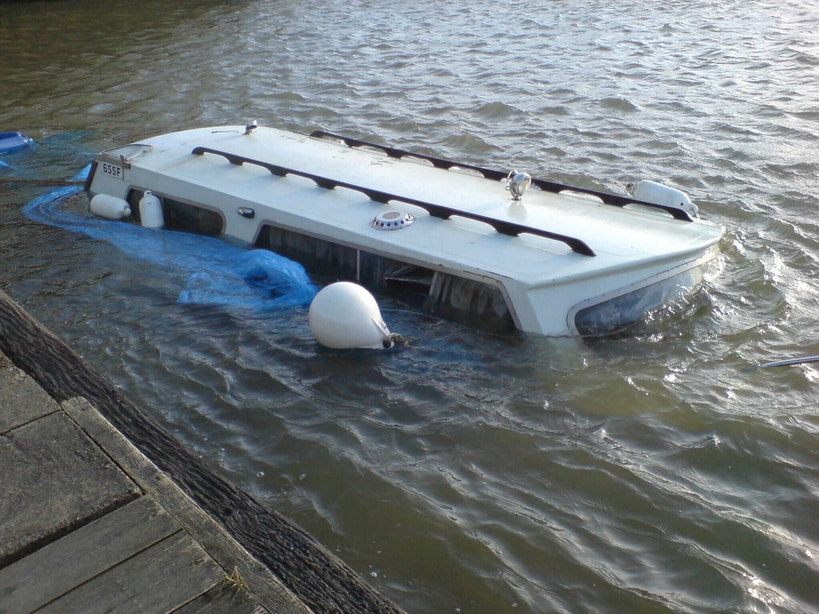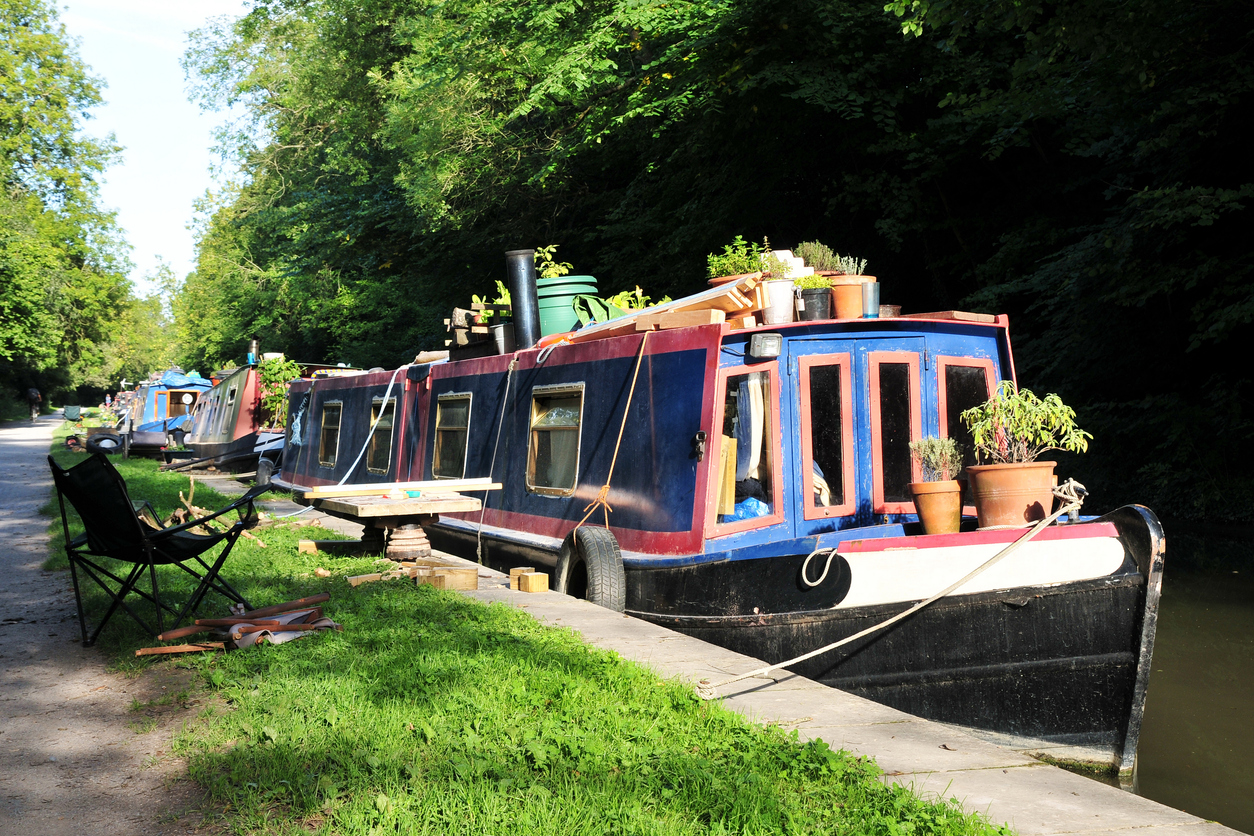Bathtubs, Yoghurt pots and perhaps my favourite, a plastic gin palace - which is about as far removed from my Dawncraft as you can get. The social side of the Inland waterways is still divided between traditional barges and the wonder material that is glass fibre. A substance first used in America in 1956 with the production of the Chinook 34 sailing boat. One of these types is still capable of hauling 40 tons of coal with its interior stripped out, the other less so.
Still, this doesn’t seem to deter the average yoghurt pot owner from wanting all of the comforts found in a purpose-built steel barge.
In my first article, I eluded to a time when the inside of the average boat was fairly sparse. Usually nothing more than what was termed a cot berth, a rudimentary galley with an acre of exposed hull. Floors were marine ply held down with simple wooden turnbuckles, and every part of the boat could be accessed in seconds, which proved ideal when I parked on top of a discarded anchor on the River Blackwater on a falling tide—punched a hole below the waterline. A tube of mastic and off memory part of the cabin floor screwed across the hole didn’t dampen the spirits, so to speak, until we affected a more permanent repair out of the water. Anyhow, sailing boats need to be as light as possible, anything to gain extra speed, so it’s worth chucking anything you don’t need overboard to make it to the bar before closing time.
This experience and the loss of a local yacht that sank after hitting something that had poor access has stayed with me and is perhaps why my Dawn Treader has been left a little sparse below decks than most of the fit-outs you see either in the magazines or on social media. When I say sparse, she is pretty much as it came out of the factory with acres of exposed white-painted fibreglass – a little naked, but it does allow for a good look especially below the waterline.
When Dawntreader was built in the 1970s, it was perhaps the heyday of the motor cruiser for the masses, and the adverts state it could sleep 6 with a spacious galley, toilet, shower and an inboard engine.
Now, whoever designed this had calculated what is termed displacement – basically how far the boat will sink into the water with the added weight of six people and their luggage. There is a natty whisky tumbler often found onboard with a symbol that looks like it belongs on the London underground. The Plimsoll line or known as the safe loading of a commercial ship. I know it works because if you overload the glass with whisky above this line, you become unstable and fall over.
But SIX people!! This means that most of the interior fit-out had to be as lightweight and straightforward as you could get away with. Today there seems to be the idea that the cruiser must be fitted out to the same standard as a mobile home complete with wood burner and topped off with a laminate floor making access into the bilge impossible. Sadly, all this extra weight increases the displacement.
Ok, so what is the big deal and why should it matter? First, many cruisers come with lower rubbing strakes that protect the hull from knocks and bashes just above the water line – about 4 inches above in the case of a Dawncraft. These are screwed through the hull, anything above the water resembles a kitchen colander with 20 or more holes in. The gas vent is often just above this and is not watertight- it’s usually just a plastic hull fitting with a hosepipe connected.

One particular Dawncraft design has an outboard well made of marine ply, the only glass fibre bit being the tape that bonds it to the hull- or rather used to 40 years ago before it became a little mushy. If you still run the z drive never let the bellows go below the water, it's worth checking when everyone is sat in the cockpit!
Sadly, I have known two with the outboard well type design that have sunk after four people were aboard and they took on water unnoticed as they were refitted out far too heavily. One went down with her own prop wash that built up inside over the tape and through the mushy ply. All this has not gone unnoticed by insurance companies. They now seem to be asking owners of older glass fibre cruisers for a survey – which suddenly becomes difficult when you have just stuck a load of tongue and groove panels to your hull with resin bond and the whole of one side is a B&Q kitchen with oak flooring.
Anyhow, that’s not the reason I am on my soapbox over this. When they built the Dawncraft, they didn’t expect anyone to use it after September and before March, so it hardly needed anything but bare fibreglass. There is something lurking on board though, especially in the colder months that can cause skin rashes, breathing difficulties, nauseous headaches and generally rotten for your health—black mould. I watched someone wrestling out their interior recently to get to some hull damage. Behind the added luxury was thick and black with mould. How much simpler it would be to clean if all you had to do was wipe down acres of white fibreglass that you could get to. If you are really house-proud think of your Glass fibre cruiser as a bathtub, many do! – well, you wouldn’t leave the inside of a bath dirty, would you?


